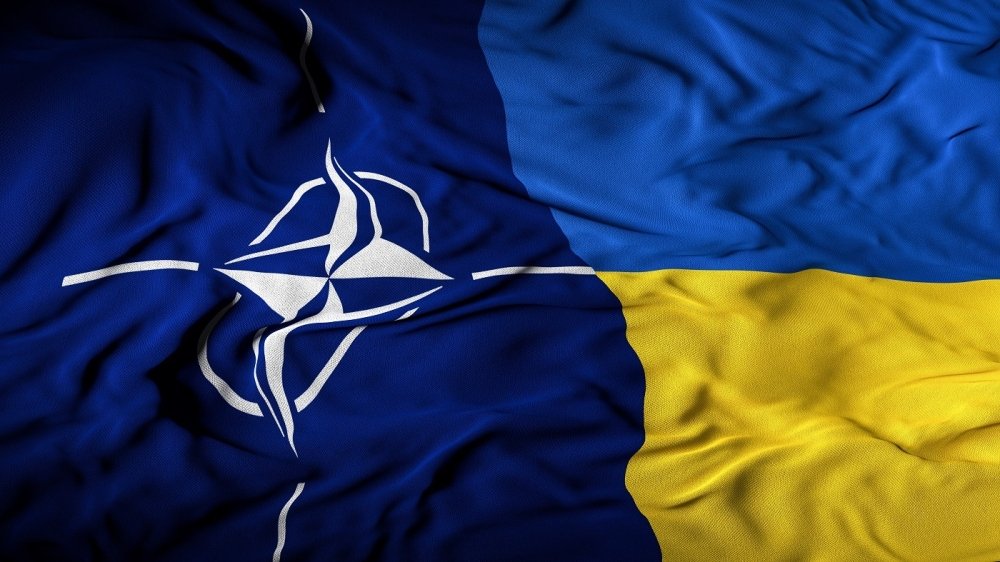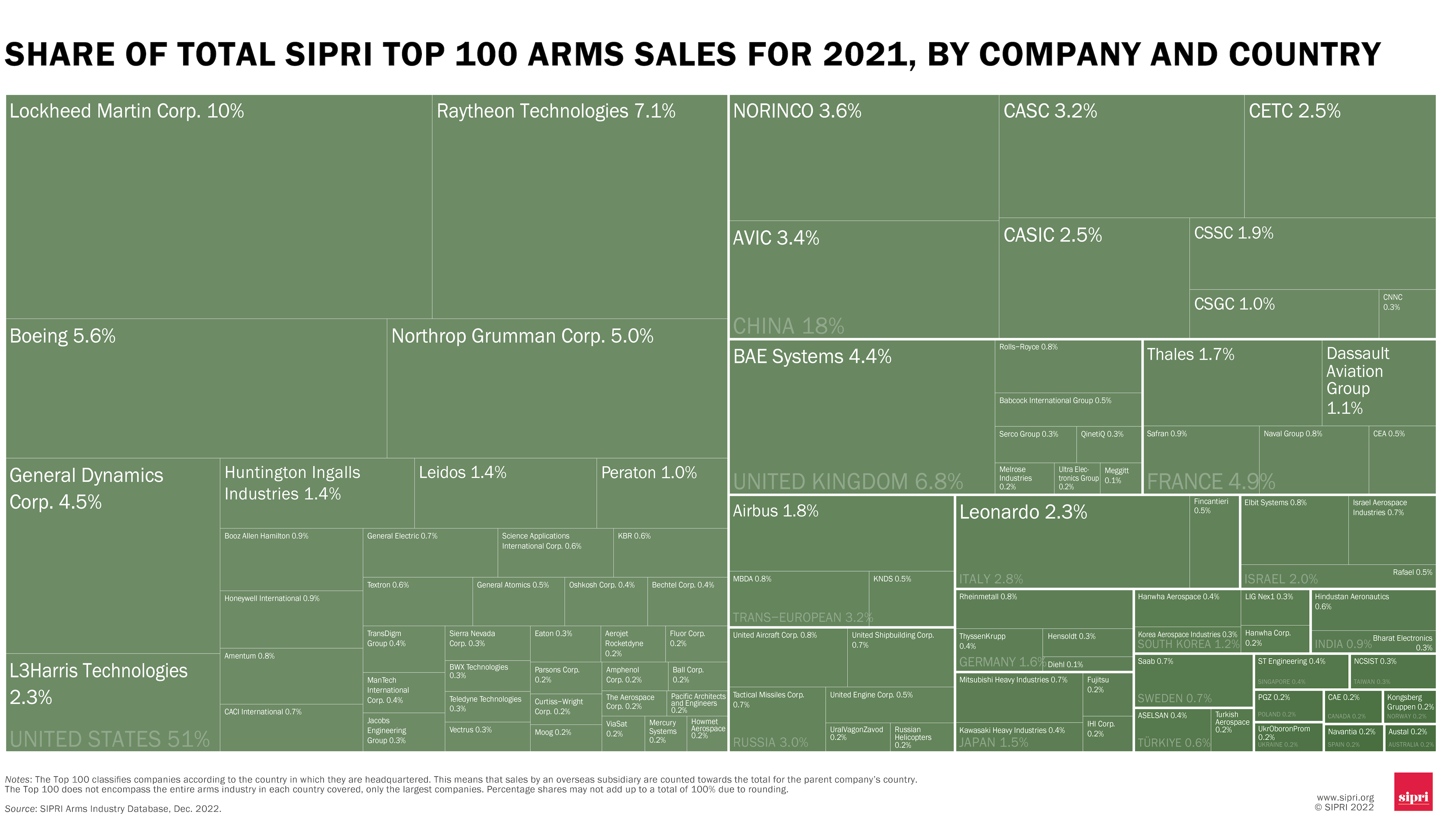
By Barnabé Goyeau, Economics Editor at The London Financial
Since the launch of the invasion of the Russian Federation against Ukraine on the 24 of February 2022, many countries and businessmen aligned with the Western bloc and NATO have supplied Ukraine and its government. Resources include military equipment, training, funding, communication, and humanitarian assistance.
However, while the political goals and statements are often discussed around this conflict, there isn’t much said about the invasion and its implications for the defence industry. Or the actual economic benefits one country might have to supply another with weapons like the West does with Ukraine (by supplying and not selling). This article will explore why and how countries that send equipment to Ukraine can get a return on investment in the defence industry.
The Defense Industry: main players, size, and structure of the market

Source: Stockholm International Research Peace Institute (SIPRI), 2021.
Per the latest data for 2021, the defence industry amounts to 592 billion US dollars, with the United States dominating the market, representing 51 % of the total arms sales alone. However, their arms sales have been slightly declining for the past years, with France and Italy recording the biggest growth rates (15 % each) while the United States recorded a small decline (-0,9 %). While it does not account for a sizable portion of the world GDP, military expenditures represented 2 % in 2021. With this data, we can already confirm that governments are the defence industry’s biggest clients.
As per those elements, we can safely assume the defence industry is an oligopolistic market: a few companies/countries dominate the market. Buyers are very few, consisting of governments and, to an extent, private military companies like Wagner or Blackwater. Thus, the business model of defence companies is B2B (Business to Business) or B2G (Business to Government).
This begs the question: why are governments buying weapons to give them then away to Ukraine? What sense does it make, economically or business-wise? The answer lies in marketing, taxable income, and the potential dependence of their neighbours on them.
The spoils of war
Due to the market structure and their clients’ profiles, defence companies do not spend as much on advertisements as companies for the average civilian. They cannot rely on conventional marketing tactics and traditionally rely on trade publications for advertising.
For governments and defence companies aligned with the West, the conflict between Russia and Ukraine is an opportunity for both. For governments in the West, it is an opportunity to weaken a political rival without sacrificing their civilians’ lives, potentially making way for modernizing their armies. For defence companies, it is the occasion to display their craftsmanship in designing products made for destruction. Since they cannot rely on flashy and fast-paced ads for their advertisement, their best tactic remains the performance of their products on the field. For some of them, it is already bearing fruits: in December 2022, Lithuania signed a contract with the French company Nexter to deliver 18 Caesar self-propelled howitzers.
In essence: more sales for national defence companies, more taxable income for the government, and a growing influence in international affairs.
The future militarization of the world
Tensions are arising between China and Taiwan. Japan is progressively severing ties with its newfound pacifist culture. Recently, French president Emmanuel Macron announced a budget increase for the military by a third of its current budget. The Chancellor of Germany, Otto Scholz, announced an increase to 2 % of the economic output of his country in defence. Vladimir Putin declared Russia would halt its participation in the New START treaty against nuclear weapons. With the conflict in Ukraine, the flames of war are being reignited in Europe, and it seems, in Asia as well. The arms race being started is likely to accelerate with the US, Russia, and the other great powers developing the fourth generation of tanks and the sixth generation of jets. More than a matter of economics, the War in Ukraine sent a shockwave throughout the world and has put further the dream of a world in peace. Governments are demanding more weapons to protect themselves against potential threats. A demand the defence industry will gladly satisfy.
Barnabé is a French student at ESSEC Business School, hailing from the Asia-Pacific cohort. He is always ready to expand his knowledge on any subject, especially in geopolitics, new technologies, and strategy. He also loves to learn about History and practices martial arts regularly. After interning at the Bank of France as a Banking Supervisor, his ambition is to work in strategy consulting later on, putting his analytical nature and inquisitiveness to good use.

It?¦s truly a nice and useful piece of info. I?¦m happy that you just shared this useful information with us. Please keep us up to date like this. Thanks for sharing.